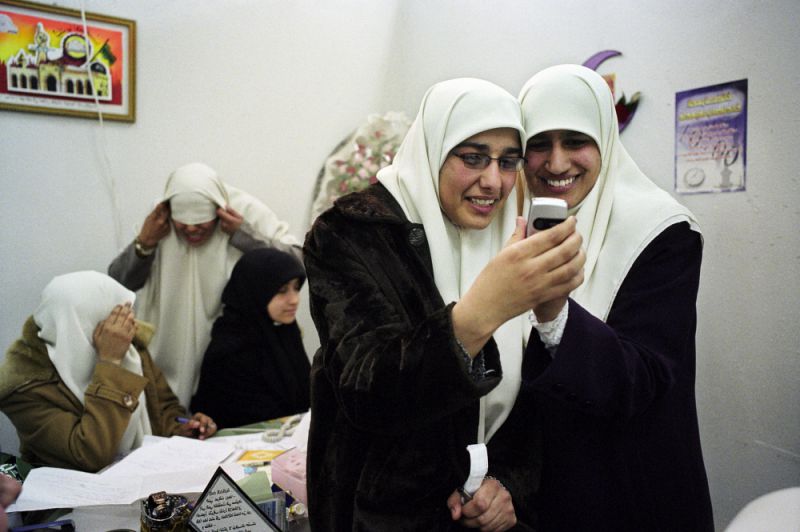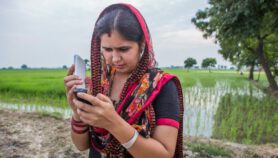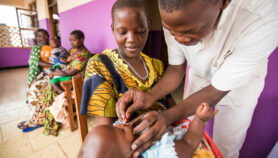By: Nicola Pearson
Send to a friend
The details you provide on this page will not be used to send unsolicited email, and will not be sold to a 3rd party. See privacy policy.
Analysing ever-increasing amounts of data — particularly digital data — is generally considered the Holy Grail of categorising people’s behaviour to target services in line with it. This doesn’t just mean commercial, personalised marketing based on our online habits, but also, in development terms, directing policies to create and target services where they are most needed. Even people who generate very little digital information themselves, because their use of mobile devices and the internet is limited, become part of these data-driven assumptions.
Taken at face value, global data shows that women own fewer mobile devices than men and use the internet less. The GSMA Connected Women report shows that more than 1.7 billion women in low- and middle-income countries do not own mobile phones and, even when they do, rarely use them to their full benefit. [1]
Similarly, a report published this month by the World Wide Web Foundation, which studied thousands of poor urban people across Africa, Asia and Latin America, concluded that women are nearly 50 per cent less likely to access the internet than men. [2]
“Internet access may help girls and women to be more independent and connected, but many societies are unprepared to accept this independence.”
Nicola Pearson, SciDev.Net
Not surprisingly, the global response to this kind of data has been to focus on increasing internet access for women and to develop initiatives that provide mobile phones to bring health and education services directly to them.
Data blind spots
But the problem with data is that it doesn’t always tell the whole story. Simply analysing the numbers can unintentionally reinforce gender stereotypes and even create solutions to problems that themselves go on to become part of the problem.
Martin Hilbert, an economist and social scientist at the University of California, Davis, who helped create SciDev.Net’s digital divide interactive feature, calls for caution here. He says that simply stating the negative correlation between being a woman and ICT access and use can reinforce the assumption that women are less technically able than men or dislike technology, so stay away from it.
When Hilbert added levels of income, employment and education to data on ICT use, he found that women with an equal level to men of all three actually use ICT more than men.
Devil’s in the detail
Similarly, the World Wide Web Foundation report also went beyond the basic numbers to show that poor urban women predominantly used the internet to browse social media. On its own, this kind of information could reinforce negative gender stereotypes of women being somehow more shallow and less ambitious online.
But the report states that urban women focus on Facebook simply because of a lack of user-friendly content, low levels of literacy and content not being available in local languages — all of these factors held them back from using the internet more widely. It’s also worth remembering that many women in the global South use social media to access support groups and activist networks, and even make financial transactions.
Hazardous side effects
Another issue we shouldn’t overlook is that upsetting the male dominated status quo by giving women increased internet access and mobile devices can create unexpected negative repercussions for them. When researchers writing for the International Journal for Equity in Health looked specifically at the impact of mHealth programmes — providing mobile phones to offer health advice and information — they found the new dynamic created by changing a woman’s status actually made some women’s lives worse by increasing domestic abuse. [3] This was because the women’s mobile phones reinforced existing power imbalances, such as having to ask a husband’s permission to use the phone and increasing suspicion of women’s whereabouts and who they were communicating with.
Rural Indian women featured in the report also said they had to hand over their phones provided by the programme to their husbands if the husband did not own a phone himself. This lack of support and demand for control caused some women to abandon the programme altogether.
In Nigeria, women were discouraged by their communities from being inquisitive and seeking out sexual health information. In the Democratic Republic of Congo, more than 80 per cent of callers into a family planning hotline were men, even though it was targeted at women. This chimes with findings from India, where only 20 per cent of female internet users seek out information on sexual issues online because they feel inhibited by cultural norms. Overall, this particular mHealth topic was considered to have entrenched rather than transformed gender inequality.Answers lie beyond numbers
Admittedly, reviews of mHealth programmes have generally been positive. But because data on cases of abuse triggered by the programmes was limited, it wasn’t clear if most of the programmes created positive change for women, or provided new ways for men to control them — another example of data not necessarily telling the whole story.
On a level playing field, which women wouldn’t want to be as digitally active as men? Internet access may help girls and women to be more independent and connected, but many societies are unprepared to accept this independence. The data may well highlight the problem, but the solution involves delving much deeper than numbers to look at why women remain in such a position.














